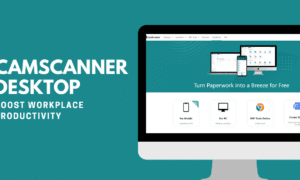In today’s digital age, you’re constantly connected to the world wide web. But with this convenience comes a potential risk – the safety of your personal data. It’s crucial to understand how to protect yourself and your sensitive information when surfing the web.
Think about all the data you share online daily. From social media posts to online shopping, you’re leaving digital footprints everywhere. Cybercriminals are always on the lookout for such information. So, how can you ensure your data stays safe?
Importance of Data Security
In the digital landscape, no one is safe from the invisible threat that is cyber-attacks, and it’s more important than ever to understand the importance of data security. Safeguarding your personal data isn’t just about protecting your privacy; it’s about defending yourself from a myriad of cyber threats designed to exploit your sensitive information.
Think of your personal data as a goldmine for cybercriminals. They’re always on the hunt for ways to get their hands on your precious information – from banking details to messages and even your surfing behavior. Cyber threats like malware, phishing, and ransomware are just a few strategies they use to infiltrate defenses and gain access.
When you become a victim of a cyber attack, the damage unfolds beyond financial losses. It comes with a hefty emotional toll, not to mention the time and energy spent trying to reclaim your stolen identity or restore your credit status. In some cases, data loss might mean losing priceless digital memories like photos or personal documents that cannot be replaced.
But there’s more to it. One aspect that’s often overlooked is that when you fall victim to a cyber attack, you also become an unwilling participant in the spread of malicious activities. Cybercriminals can use the data they’ve stolen from you to carry out more attacks, further spreading this digital virus and affecting other innocent internet users.
Knowing how to protect your personal data while traversing the digital world can make all the difference in this ongoing battle against cyber threats. Securing your data is more than just a best practice; it’s a necessity in today’s world.
Secure Browsing Practices
Understanding how to protect your personal data while surfing the web should not be taken lightly. Implementing secure browsing practices is a necessary step towards achieving this goal. Let’s take a deeper dive into some efficient methods that you can employ right away.
Using a VPN
Utilizing a Virtual Private Network, more commonly referred to as a VPN, should be your go-to method for maintaining online privacy. This digital tool essentially creates an encrypted connection between your device and the network you’re connected to. With a VPN, you’re ensuring that your online activities are not easily tracked or intercepted, making it difficult for cybercriminals to compromise your data. You’ll find this particularly handy when using public Wi-Fi networks which are notoriously insecure and favored playgrounds for hackers.
Updating Browsers and Software Regularly
The importance of keeping your browser and software updated shouldn’t be underestimated. Doing so is akin to tightening your home’s security; as vulnerabilities are discovered, software companies release updates or patches to address these issues. Not updating promptly means your system is exposed to cyber threats. Outdated software is easy pickings for cybercriminals – they can exploit these known vulnerabilities to gain access to your system and, consequently, your private information. So, make a habit of updating not just your web browsers, but all your software regularly. You’ll be grateful you did.
Avoiding Suspicious Links
Cybercriminals have become increasingly savvy at creating seemingly legitimate links that harbor malicious intent. Clicking on such a link can lead to a plethora of unwanted scenarios – from minor nuisances like redirecting you to unwanted sites to major concerns like downloading malware or stealing personal data. If you come across a link that you feel is suspicious, trust your instinct and give it a wide berth. A rule of thumb here: If it doesn’t feel right, it probably isn’t. As you continue to surf the web, always remain cautious and alert for these potential threats.
Encryption and Password Management
Now that we’ve looked at secure browsing practices and explored using VPNs to keep your data private, let’s delve into the crucial arena of Encryption and Password Management. This is a vital part of your personal data security strategy.
Importance of Strong Passwords
You probably already know how essential it is to craft strong passwords. Security experts estimate that 81% of data breaches are due to weak or recycled passwords, revealing just how important they are in your line of defense. Your password is not a place to skimp, as it’s essentially the key to your online identity.
Strong passwords have a few key characteristics:
- Lengthy (at least 12 characters)
- Varied with numbers, mixed-case letters, and special characters
- Not easily guessable (avoiding personal information)
A password manager can help create and store complex passwords. With a password manager, you need to remember only one, extremely secure password.
Two-Factor Authentication
Another tool at your disposal is Two-Factor Authentication (2FA). Two-Factor Authentication is exactly what it sounds like: it requires two pieces of evidence to prove your identity before allowing access to your accounts. This drastically reduces the chances of unauthorized access to your data, even if your password gets compromised.
Many online platforms offer Two-Factor Authentication, so it’s worth checking in your security settings to see if you can enable it.
Utilizing Secure Connections
Last but not least, consider whether your connections are secure. Are you accessing websites using HTTPS? HTTP protocol lacks encryption, meaning any data you send could easily be intercepted. HTTPS encrypts the data between your browser and the server, keeping your information private.
Educating Yourself on Online Threats
We can’t stress enough how crucial it is to familiarize yourself with the types of online threats you may face. Knowing what’s out there is the first step towards effective protection. Let’s have a look at some common threats that you should be on your guard for while browsing the internet.
Phishing Attacks are one of the most abundant forms of online threats. Cybercriminals often use deceptive emails or websites to trick you into disclosing your personal information. They may replicate websites that you frequently visit, urging you to update your details or confirm your password, and nab your credentials when you comply.
Malware, short for malicious software, is another major threat. This encompasses different types of hostile software, like viruses, worms, trojans, and ransomware — with each variety designed to perform specific harmful actions. For instance, ransomware encrypts your valuable data and demands money for its decryption.
Social Engineering Attacks take advantage of human psychology to manipulate you into revealing confidential information. These attacks often disguise themselves as trusted entities to exploit your natural inclination to trust.
Knowing these threats, what can you do to stay safe?
A robust Firewall is your first line of defense, acting as a barrier between your computer and potential cyber attackers. Ensure your system’s firewall is always active and properly configured.
Antivirus Software can also play a vital role in your defense. Regularly updating your antivirus software lets it identify and counteract the latest malware strains.
Finally, exercise critical thinking when interacting with any communication that asks for your personal details. Even if it looks genuine, cross-checks can save you from falling victim to a phishing or social engineering attack.
Surf with Confidence
So, you’ve learned the ropes of safeguarding your data while surfing the web. It’s not about completely eradicating online threats – that’s a tall order. Instead, it’s about arming yourself with knowledge and tools to minimize your vulnerability. Remember, a robust firewall and updated antivirus software are your first line of defense.
But they’re not your only shield. Your discernment when sharing personal info online is just as crucial. The web’s a wild place, but with the right precautions, you can navigate it more safely. Stay informed, stay protected, and surf with confidence.



































